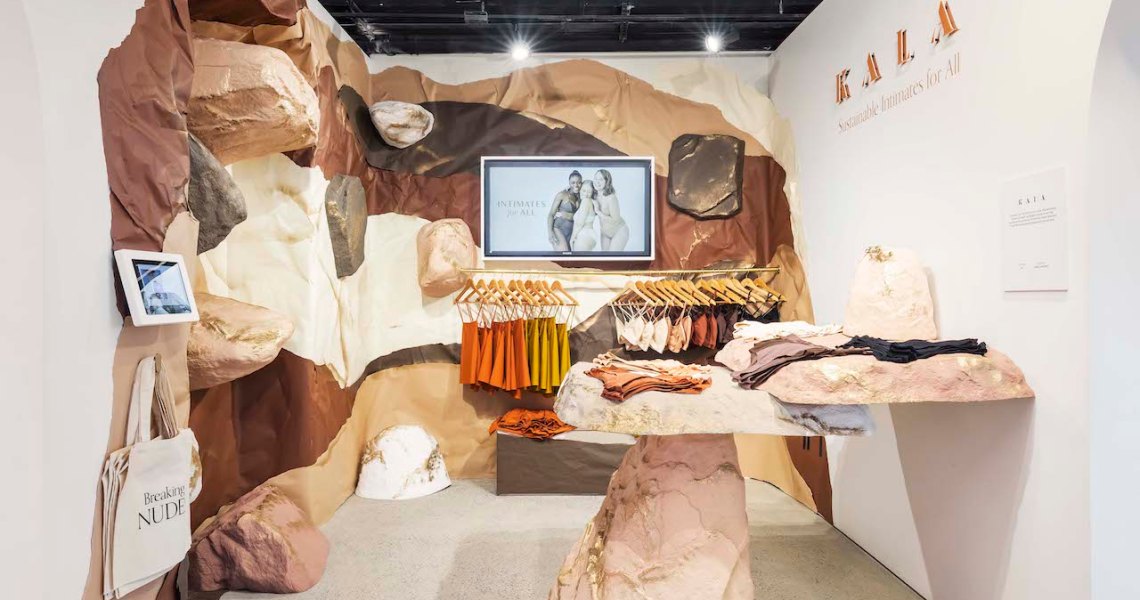Showfields, a rotating retail concept in SoHo with a focus on DTC companies, first opened its doors in December 2018, with the majority of the space up and running by March 2019. Now, after one year in business, the company is continuing to bring in new brands and is preparing to launch a new concept with new companies at the end of March. With many retailers struggling to attract customers and closing stores, Showfields is hoping to help young companies avoid the perils of physical retail. The retail-as-a-service space is not without competitors. Companies like Neighborhood Goods, b&ta, Re:store and Naked Retail Group all have similar concepts, helping lower the barrier to entry into physical retail.
As part of Showfields’ concept, the company rotates brands in and out of the space, charging a starting fee of $6,000 a month for a section of the store, both to keep things fresh and to keep new and existing customers coming back to discover more. Companies with space in Showfields have seen, on average, a 50% increase in sales.
Showfields CEO and founder Tal Zvi Nathanel spoke to Glossy about key learnings from the first year in business and how the company is setting itself up to grow in 2020.
How is Showfields staying on top of the constantly evolving retail landscape?
People like to say retail is dead, but in reality, the only thing that died recently is this old retail customer. One of the things we expected was that there is a new type of customer out there, and this customer has a different set of expectations because of technology. Today’s consumer has different expectations for everything, including the way they eat, commute, listen to music and shop. For retail, people want an experience that keeps them in the store. [Showfields launched House of Showfields, a 30-minute experience that brings live performance into the retail experience, in July.]
We collect a lot of data and talk to hundreds of brands and thousands of people a year. We’ve found that the average visit time within Showfields [in the last year] was 33 minutes. We have to keep meeting customer expectations in terms of how we use the space, what we carry and what experience we offer.
What was a key learning for you, after one year in business?
At the beginning, most of the brands in the space opted to not have the cash-and-carry experience. Customers could only ship an order to their house from the store, but we quickly understood that customers wanted to walk out with a product. That [discovery] happened very quickly, so we adapted and made it so most would have a lot of products that people could walk out with. Yet, given the choice, we found most opt in to not carry inventory.
How are you catering the inventory strategy for companies of different sizes or those established versus new-to-market?
If you are an emerging brand and you are trying to tell your story, having a lower amount of items would really help in terms of focusing the attention on the right product. One of the things we are trying to do when we work with the emerging brands is focus on a few products at a time and put as much attention on those products as we can [by giving brands the ability to control the content in their space, their inventory and their messaging]. Focusing on specific products makes it more interesting and effective. For those that already have awareness, like Quip and Swell, having more inventory and a greater variety of items does better. When you walk into the Swell space, you can choose from a wide variety of products and colors, which makes it a better experience.
Ad position: web_incontent_pos1
What are some of the growth areas Showfields will focus on this year?
There are three buckets we are going to put attention on. One is physical expansion. By the end of the year, we are aiming for three stores in total. I’m not sure yet of the exact location of the next store, but it’s going to be on the East Coast, but not New York. Digitally, one of the things we are going to do this year extends the way brands and customers can meet, giving the customer better digital tools to interact and engage with the content and experiences in the store [things like a pilot digital guide through Showfields]. We will also be changing all the brands in the store at the end of March and then again in September.




